Science Topics
The Endocannabinoid System
The endocannabinoid system is responsible for regulating balance in our body’s immune response, appetite, metabolism, memory, and more. In spite of the integral role this system takes on, until recently it remained an unknown part of the human body’s functions.
Differences between CBD and THC
Of the more than 100 different cannabinoids so far identified in cannabis plants like hemp, tetrahydrocannabinol (THC) and cannabidiol (CBD) are the most abundant and best understood. Cannabinoids are a class of compounds unique to cannabis. Because they mimic the body’s own endocannabinoids, they are able to interact with our endocannabinoid system and alter neurotransmitter release in the brain.
Clinical Endocannabinoid Deficiency Syndrome (CEDS)
Clinical Endocannabinoid Deficiency Syndrome (CEDS) is an umbrella term for a group of illnesses, including fibromyalgia, migraine and irritable bowel syndrome. A growing number of respected scientists in the medical community think low levels of endocannabinoids are the root cause of these devastating conditions. Medscape says there is scientific evidence suggesting endocannabinoids play a role in inflammation, insulin sensitivity, and fat and energy metabolism.
CBD/Hemp Interaction with receptors
Cannabinoids like cannabidiol (CBD) and tetrahydrocannabinol (THC) are able to elicit their healing effects by interacting with the body’s endocannabinoid system. The system, integral to our physiologies, is responsible for regulating an array of body processes, such as pain sensation, immune response, anxiety, sleep, mood, appetite, metabolism, memory, and more.
The Endocannabinoid System
Ever wonder how cannabinoids interact with your body? The answer is through the endocannabinoid system.
The endocannabinoid system is responsible for regulating balance in our body’s immune response, appetite, metabolism, memory, and more. In spite of the integral role this system takes on, until recently it remained an unknown part of the human body’s functions. Named for the plant that inspired its discovery, the endocannabinoid system’s importance is only just becoming understood by the medical community. It is through this system that the naturally occurring cannabinoids from medical cannabis interact with our bodies and trigger their beneficial effects. With the potential to greatly affect the way our body’s work, it is essential that we recognize how to maintain a healthy endocannabinoid system.
What is the Endocannabinoid System?
The endocannabinoid system is made up of several integrated mechanisms: enzymes responsible for creating and destroying cannabinoids receptor sites on cells to receive cannabinoids (CB1 and CB2) the endocannabinoids themselves (compounds that are naturally produced by the human body). Together, these mechanisms are predominantly responsible for regulating body processes and functions. Endocannabinoids interact with the CB1 and CB2 receptor sites with the goal of helping the body achieve homeostasis, or equilibrium2. CB1 and CB2 receptors respond differently, respectively, to different cannabinoids. CB1 receptors, most prevalent in the central nervous system, are linked to modulating stress, anxiety, appetite, nausea, immune system balance, and even the inhibition of tumors1,4,10. CB2 receptors, found mostly on cells in the immune system, seem to dominate in fighting inflammation and damage to tissue11. Some cells can even contain both types of receptors, each responsible for a different function. Phytocannabinoids, which are compounds found in the seeds, stalk and flower of cannabis, also interact with the cannabinoid receptors6,8. The most common cannabinoids found in cannabis are tetrahydrocannabinol (THC), the psychoactive compound known to produce a high, and cannabidiol (CBD), a non-psychoactive compound, in addition to the 400+ active compounds found in hemp. While the endocannabinoid system is linked to a number of important processes and is concentrated in the brain, nervous system, and reproductive organs, it has shown not to affect the regions of the brain that control heart and lung function. This is one of the main reasons that fatal overdoses of cannabinoids do not occur.
The History of the Endocannabinoid System
Through the 19th century, in the United States extractions of the cannabis plant were widely used for a number of medicinal purposes. Fearing the abuse of Cannabis’s psychoactive properties, the federal government prohibited the cannabis plant in 1937. This prevented the plant from being use recreationally, medicinally and in research, which ending up stalling the progress of our understanding of the endocannabinoid system and the possible therapeutic properties. For nearly 50 years, Cannabis was dropped from popular pharmacopeia and labeled as illicit in the minds of most Americans. In the early 1990’s, however, Lisa Matsuda and her team at the National Institute of Mental Health first identified a THC-sensitive receptor in the brains of rats. Following this revelation, the National Academy of Science predicted the 1990’s would be the “Decade of the Brain”. It turned out to be true, as the following 10-year period would produce “more advances in neuroscience than in all previous years combined”5. Since then, scientists have labored to learn as much as they can about the endocannabinoid system, our naturally occurring cannabinoids, and the ways cannabis alters this balance, publishing over 20,000 scientific studies referencing cannabinoids in just the last two decades.
How Does the Endocannabinoid System Affect my Health?
Since discovering the endocannabinoid system and its parts, researchers have worked to further understand how the endocannabinoid system may be used therapeutically to decrease pain, fight cancer, prevent neurodegenerative diseases, and promote health. Overall, research indicates that the endocannabinoid system helps regulate the body’s immune and central nervous systems and ensure they are running correctly. One theory about how the endocannabinoid system relates to our overall health is an “endocannabinoid deficiency syndrome,” which speculates that for some people, the body does not generate enough endocannabinoids13. This concept further speculates that the deficiency could be the root cause of many autoimmune disorders, including migraines, fibromyalgia, irritable bowel syndrome and more. Overall, significant research must still be done to better understand the impact of the endocannabinoid system on our overall health, and how supplementing our natural endocannabinoid production with plant-based cannabinoids may play a significant therapeutic role in our health.
As we learn more about the endocannabinoid system, we will also learn about the potential for compounds from cannabis, like THC, CBD, and more, to be used therapeutically. Finding ways to modulate the endocannabinoid system’s activity opens pathways to an amazingly disparate set of chronic diseases and disorders9. This includes difficult conditions like Parkinson’s, multiple sclerosis, and even cancer.
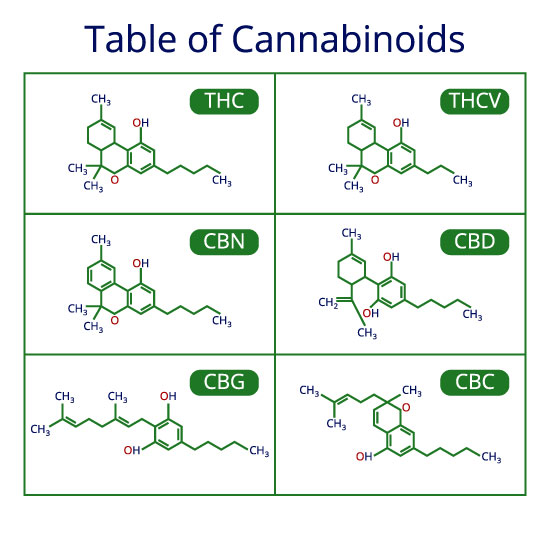

Differences
The 4 Differences between CBD and THC
Of the more than 100 different cannabinoids so far identified in cannabis plants like hemp, tetrahydrocannabinol (THC) and cannabidiol (CBD) are the most abundant and best understood. Cannabinoids are a class of compounds unique to cannabis. Because they mimic the body’s own endocannabinoids, they are able to interact with our endocannabinoid system and alter neurotransmitter release in the brain.
Because of the lingering stigma around cannabis, a common misconception is that THC is the “bad” cannabinoid and CBD is the “good” cannabinoid. Scientists have found both to have therapeutic properties, and there’s evidence that they’re able to work synergistically with each other and the other constituents found in cannabis to maximize their natural effects.
Still, there are distinct differences between the two. Here we take a look at the four major differences:
1. THC Can Cause a High, CBD Cannot
For consumers of cannabinoids, one of the key differences between THC and CBD is whether they cause a high.
THC is psychoactive. It is the cannabinoid that’s responsible for eliciting the euphoric effect when users consume medical marijuana.
CBD is non-psychoactive. No matter how much is consumed, CBD cannot cause a high. In fact, CBD suppresses the psychoactive properties of THC.
2. THC Dominates Marijuana, CBD Dominates Hemp
While THC and CBD are each found in various concentrations in both types of cannabis plants — hemp and marijuana – THC is most plentiful in marijuana and CBD is present in higher quantities in hemp.
THC dominates marijuana’s chemical makeup. In general, marijuana plants are carefully cultivated with the intent of maximizing their concentration of THC.
Hemp’s chemical makeup, however, is dominated by CBD. Hemp is naturally abundant in CBD, and contains only trace amounts of THC (no more than 0.3%), well below the psychoactive threshold.
3. THC is Prohibited Under Federal Law, CBD Is Not
In the United States, THC and marijuana are specifically listed as controlled substances under the Controlled Substances Act and therefore prohibited. Twenty-nine states and the District of Columbia, however, have passed their own laws permitting the use of medical marijuana containing THC if a licensed physician recommends it. Eight of those states and the District of Columbia have gone a step further and passed laws permitting marijuana with THC for personal use.
CBD is not specifically listed in the Controlled Substances Act. This means, that the cannabinoid is federally legal, provided that it’s derived from hemp and not marijuana. CBD oil made from marijuana is prohibited federally, but CBD hemp oil products are legal under federal law. Some states have passed their own policies regulating CBD or hemp, but more often than not, hemp derived CBD is legally accessible in the U.S.
4. THC Activates Cannabinoid Receptors, CBD Does Not
All cannabinoids, including plant-derived compounds like THC and CBD, interact with the endocannabinoid system through its two receptors – CB1 and CB2. The endocannabinoid system regulates the body’s homeostasis, or general state of balance, impacting many of our functions like pain, mood, sleep, and appetite.
THC is considered an agonist of the endocannabinoid system’s CB1 and CB2 receptors because it binds with and activates them.
CBD is considered an indirect antagonist of cannabinoid agonists. This means that it blocks the two receptors, thereby suppressesing the CB1 and CB2 activating qualities of cannabinoids like THC.
It’s through these interactions that the two cannabinoids are able to trigger chemical responses and augment the endocannabinoid system as it works to keep our systems in balance.
Why are CBD/Hemp made from Industrial Hemp supplements legal?
The 2014 Farm Bill, which included Section 7606 allowing for universities and state departments of agriculture to begin cultivating industrial hemp for limited purposes. Specifically, the law allows universities and state departments of agriculture to grow or cultivate industrial hemp if:
“(1) the industrial hemp is grown or cultivated for purposes of research conducted under an agricultural pilot program or other agricultural or academic research; and
(2) the growing or cultivating of industrial hemp is allowed under the laws of the state in which such institution of higher education or state department of agriculture is located and such research occurs.”
The law also requires that the grow sites be certified by—and registered with—their state.
A bipartisan group of U.S. senators introduced the Industrial Hemp Farming Act of 2015 that would allow American farmers to produce and cultivate industrial hemp. The bill would remove hemp from the controlled substances list as long as it contained no more than 0.3 percent THC.
The U.S. Department of Agriculture, in consultation with the U.S. Drug Enforcement Agency (DEA) and the U.S. Food and Drug Administration, released a Statement of Principles on Industrial Hemp in the Federal Register on Aug 12, 2016, on the applicable activities related to hemp in the 2014 Farm Bill.
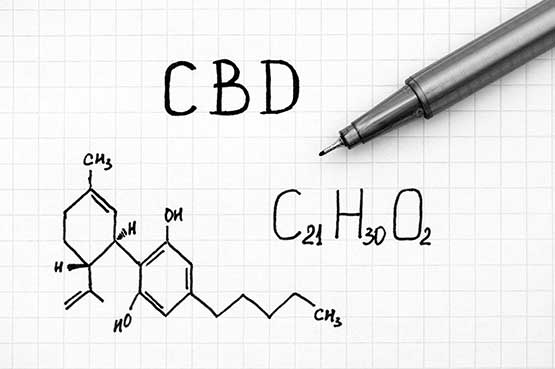
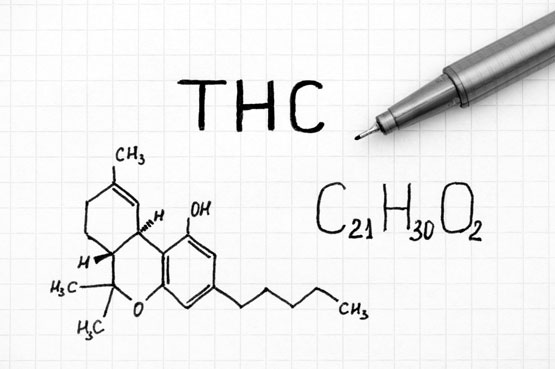
Clinical Endocannabinoid Deficiency
What is Clinical Endocannabinoid Deficiency?
Researchers believe that the underlying cause of many ailments, particularly those related to the immune system and inflammation, could be a disorder referred to as clinical endocannabinoid deficiency.
Endocannabinoid deficiency is a theory for the symptoms and conditions that develop when the body’s endocannabinoid system isn’t functioning properly. We’ve previously discussed the endocannabinoid system and its role in regulating a wide array of body processes to maintain our health. The body naturally produces neuromodulatory lipids called endocannabinoids, which interact cannabinoid receptors throughout the body to elicit chemical responses that keep the body in balance.
The theory of clinical endocannabinoid deficiency suggests that in some cases the body doesn’t produce enough endocannabinoids or enough receptors for the endocannabinoid system to function properly. As a result, the many functions aren’t regulated properly and the body becomes unbalanced, allowing diseases to arise.
Renowned cannabinoid researcher Dr. Ethan Russo first proposed the theory of clinical endocannabinoid deficiency in 2004. In a study, published in Neuro Endocrinology Letters, Russo suggested that deficient cannabinoid levels might explain why some conditions develop.
Russo had examined the available literature and found evidence that people diagnosed with certain conditions had lower levels of endocannabinoids. He suggested that a person being deficient in endocannabinoids and/or cannabinoid receptors could explain why supplementing with cannabinoids found in plants like hemp were proving effective at alleviating some conditions.
“Migraine, fibromyalgia, [irritable bowel syndrome] and related conditions display common clinical, biochemical and pathophysiological patterns that suggests an underlying clinical endocannabinoid deficiency that may be suitably treated with cannabinoid medicines,” Russo concluded in his research review.
Cannabinoids found in plants like hemp, including cannabidiol (CBD), are analogous to the endocannabinoids naturally produced by the body. Research shows that they interact with the cannabinoid receptors of the endocannabinoid system to elicit chemical responses that help bring about homeostasis.
A deficiency in endocannabinoids has been linked to several other disorders besides migraine, fibromyalgia and irritable bowel syndrome. The endocannabinoid system is responsible for regulating the release of neurotransmitter, so diseases that are attributed to their dysfunction, such as Alzheimer’s disease and Parkinson’s disease, may be related to clinical endocannabinoid deficiency.
While more research needs to be done before endocannabinoid deficiency can be proven, the theory could open the door for methods to prevent and manage certain conditions. Russo believes cannabinoids from cannabis plants like hemp are essential nutrients that can minimize certain diseases by assisting the endocannabinoid system and ensuring that it functions properly.
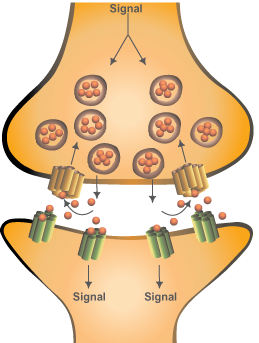
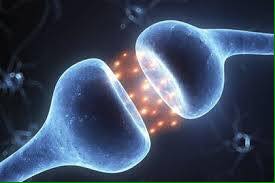
Receptors
CBD/Hemp Interaction with Receptors
Cannabinoids like cannabidiol (CBD) and tetrahydrocannabinol (THC) are able to elicit their healing effects by interacting with the body’s endocannabinoid system. The system, integral to our physiologies, is responsible for regulating an array of body processes, such as pain sensation, immune response, anxiety, sleep, mood, appetite, metabolism, memory, and more.
The endocannabinoid system is made up of two types of receptors that are configured to accept cannabinoids. These cannabinoid receptors – CB1 and CB2 – are located on cells throughout the body.
CB1 Receptors
Discovered by scientists in 1990, CB1 receptors are primarily found in the brain and central nervous system, but are also present in the lungs, liver, kidneys, and reproductive organs. These are the receptors that interact with THC to cause a user to experience a euphoric high.
CB1 receptors have been found to play a role in memory processing, motor regulation, appetite, pain sensation, mood, and sleep.
The activation of CB1 receptors have also been linked to neuroprotective responses, suggesting the cannabinoids with a higher affinity for CB1 receptors could help in the prevention and treatment of neurodegenerative conditions like multiple sclerosis, Alzheimer’s disease, and Parkinson’s disease.
CB2 Receptors
CB2 receptors, discovered by researchers in 1993, are found primarily on cells in the immune system and its associated structures.
When CB2 receptors are activated, they stimulate a response that fights inflammation, which in turn reduces pain and minimizes damage to tissues.
These anti-inflammatory effects have been found to be beneficial for treating inflammation-related conditions like arthritis, Crohn’s disease and inflammatory bowel syndrome.
Cannabinoids’ Relationship to the CB1 and CB2 Receptors
Cannabinoids help coordinate and regulate everything we feel, think, and do by binding or interacting with the endocannabinoid system’s CB1 and CB2 receptors. Like a key fits to a lock, cannabinoids are designed to link together with the cannabinoid receptors. When they link, it spurs the receiving neuron into action, triggering a set of events to pass along the message and carry out a variety of cellular responses needed for homeostasis and healthy functioning.
Our body naturally produces cannabinoids, referred to as endocannabinoids. These endocannabinoids — anandamide and 2-arachidonoglycerol — are tasked with interacting with the receptors to maintain balance. However, phytocannabinoids like CBD and THC, which are obtained from plants, also effectively stimulate the CB1 and CB2 receptors.
Phytocannabinoids may act as supplements in the case that there’s a shortage of endocannabinoids, a condition called endocannabinoid deficiency. It is theorized the endocannabinoid deficiency can lead to the development of various diseases and conditions related to the immune and nervous systems. Administering cannabinoids like CBD and THC may help the endocannabinoid system maintain its proper function.
Overall, significant research must still be done to better understand the impact of the interaction between cannabinoids and the CB1 and CB2 receptors. Scientists are still investigating how supplementing our natural cannabinoid production with plant-based cannabinoids may play a significant therapeutic role in our health.
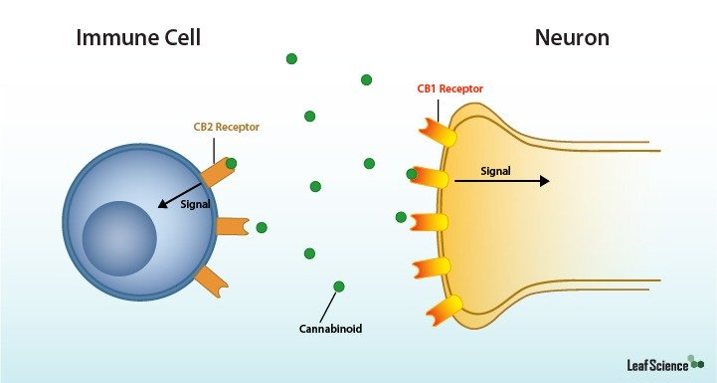
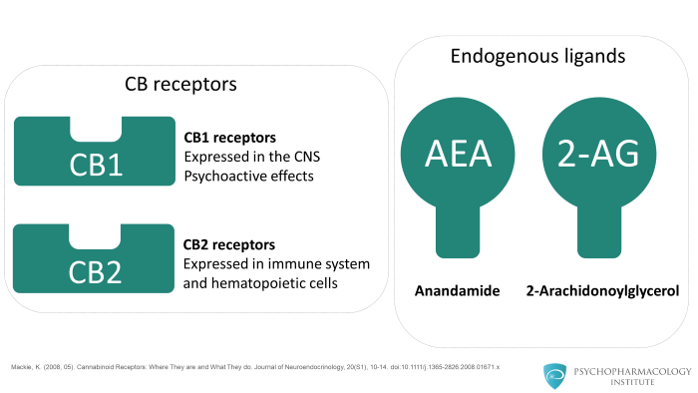
© 2023 Zero Point Solutions